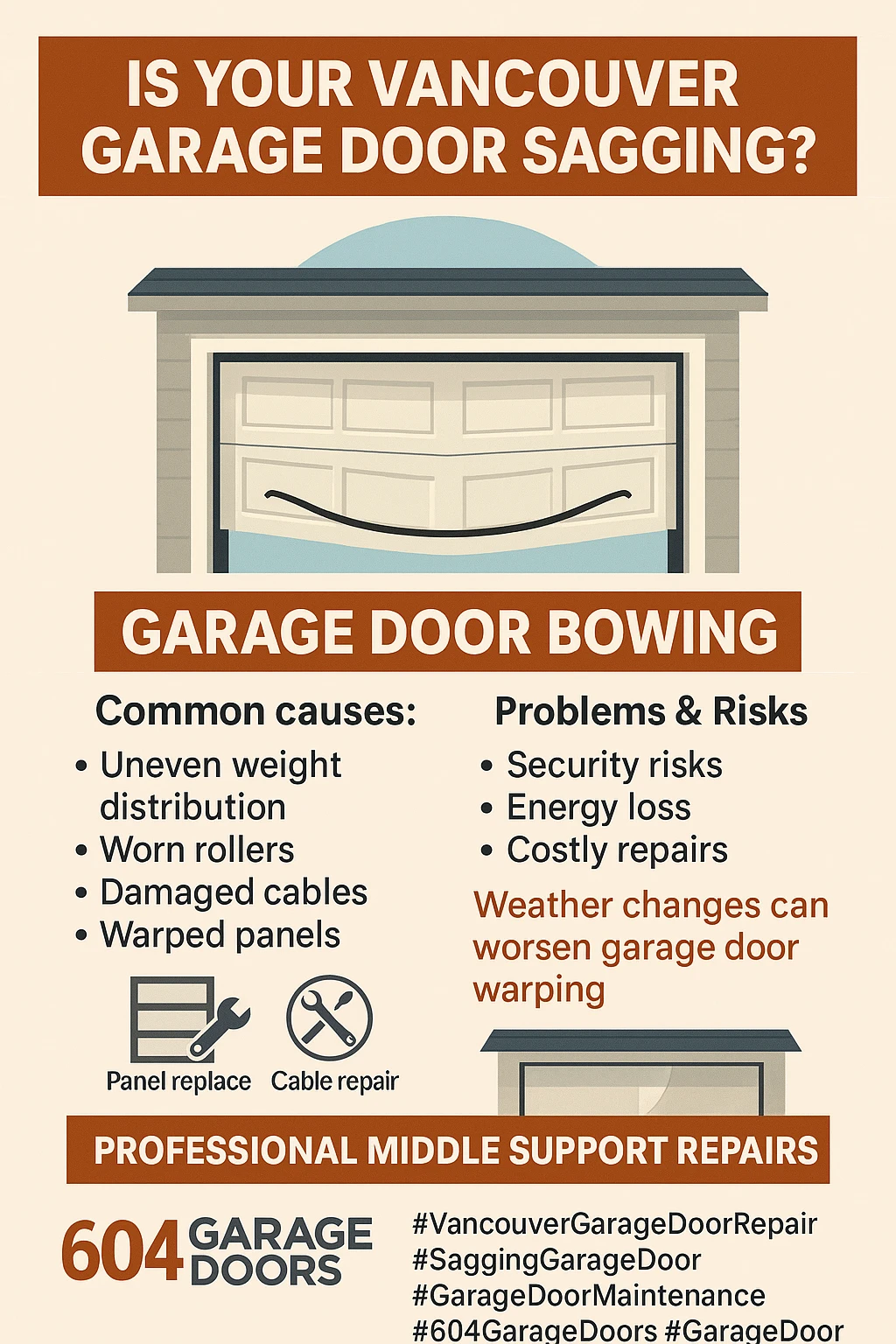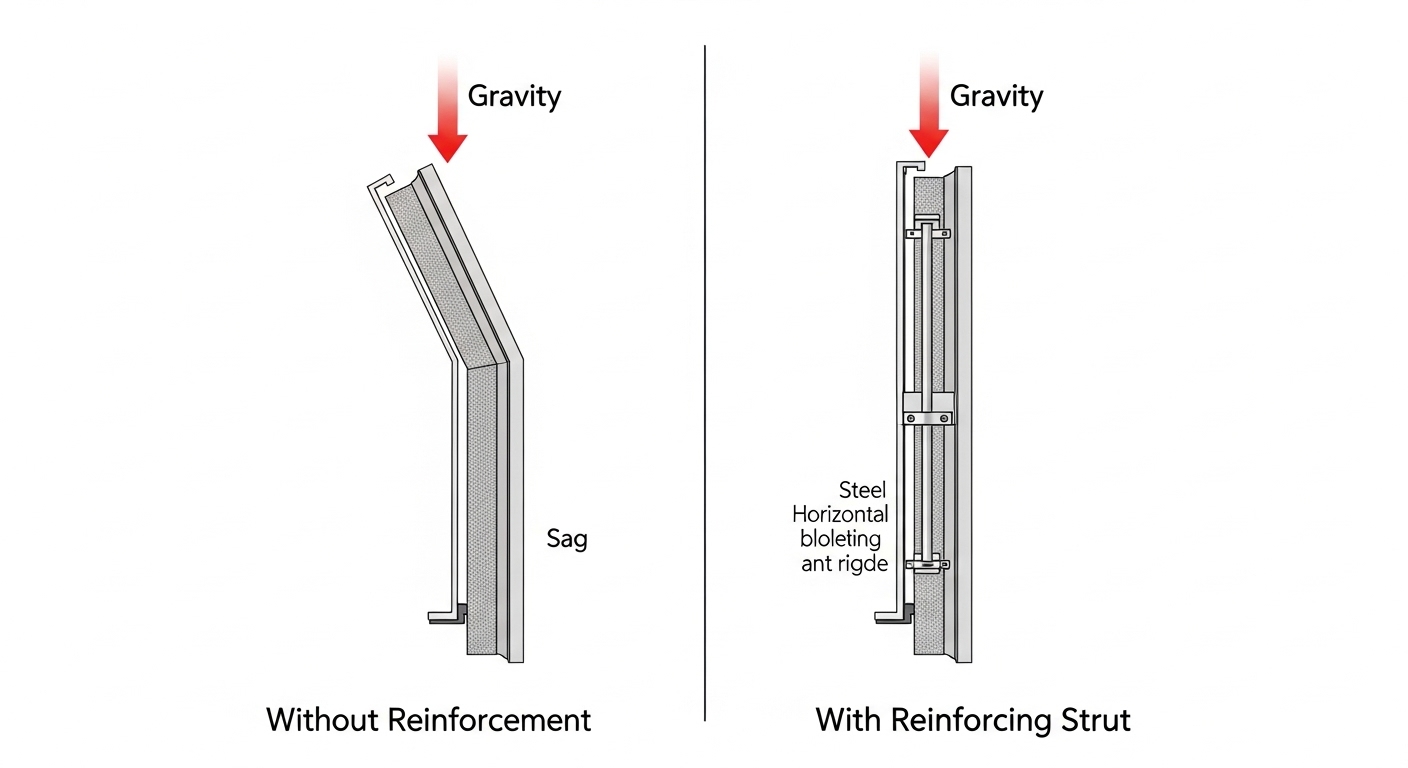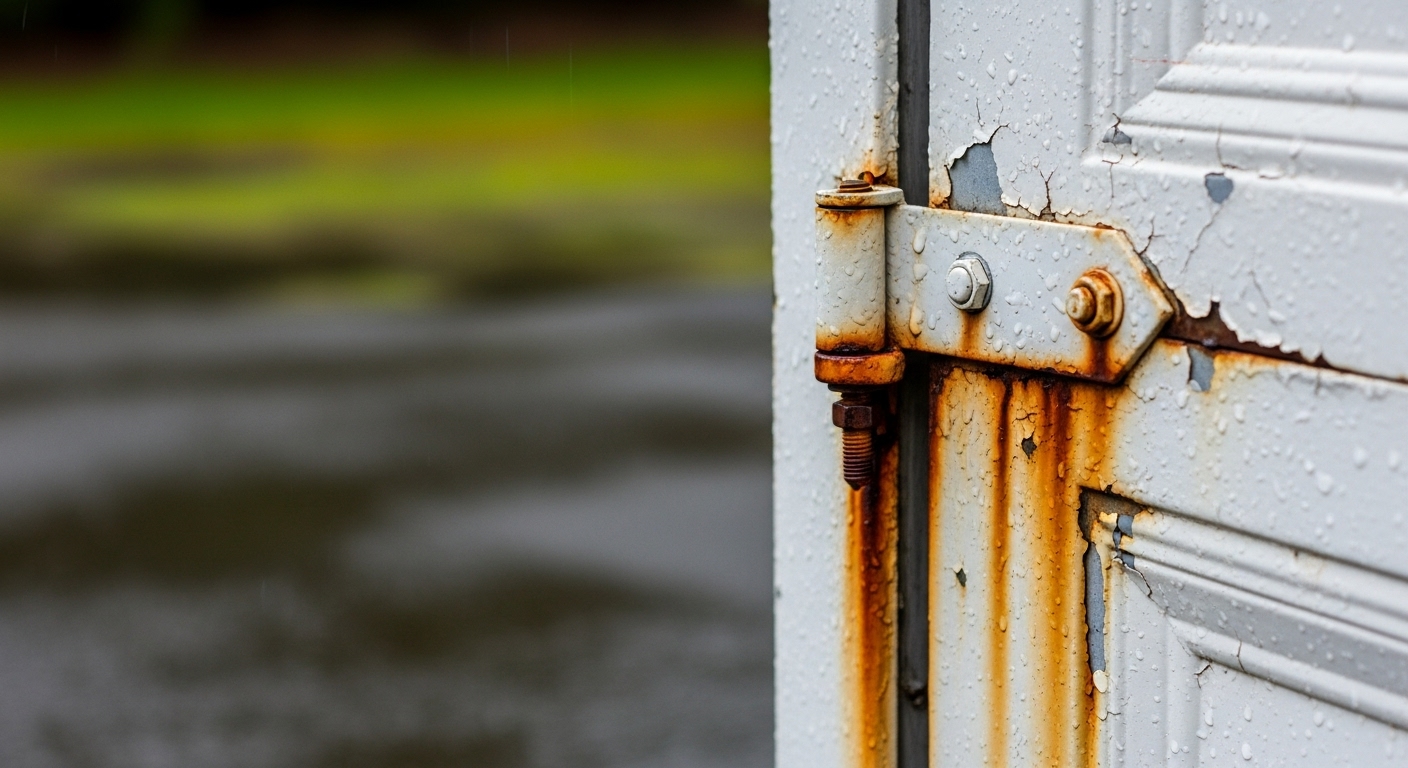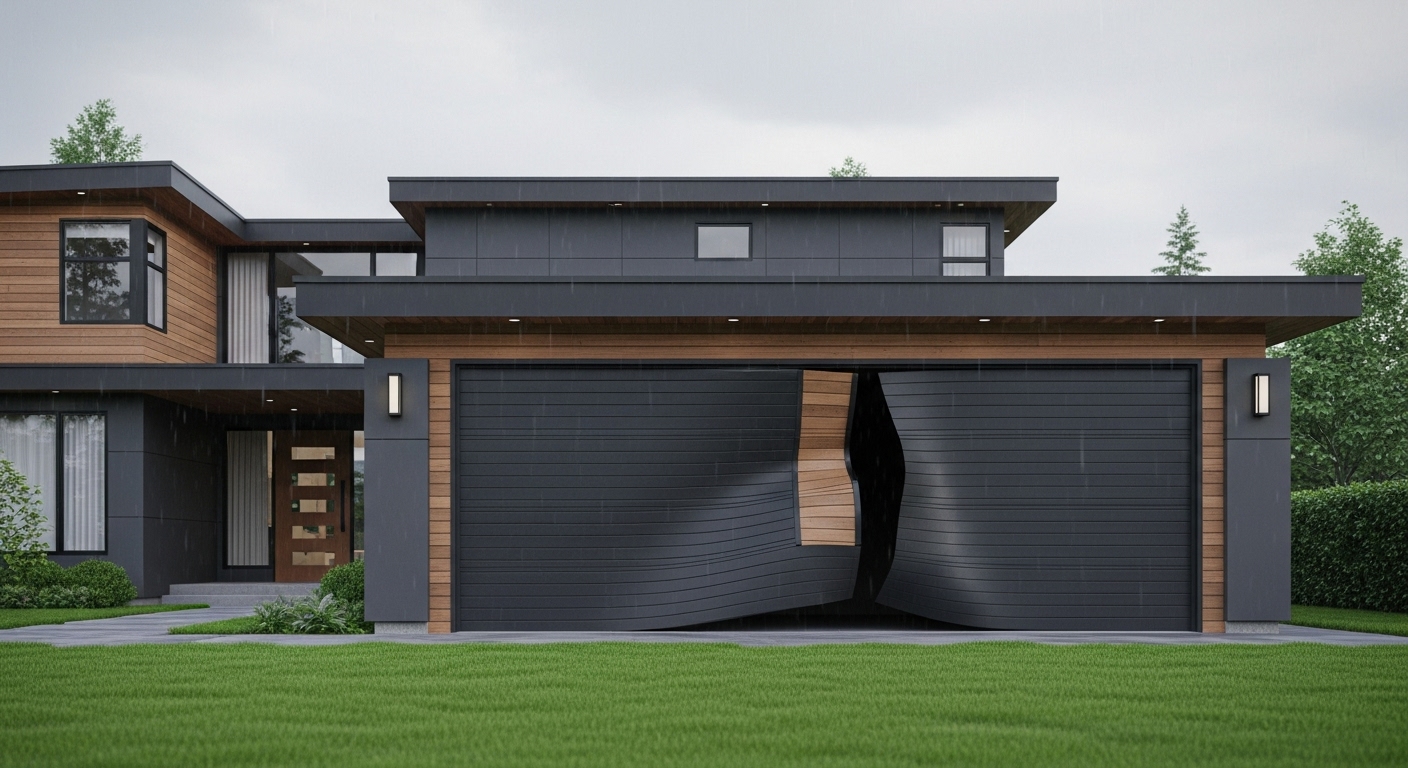Why Your Vancouver Garage Door Sags in the Middle: Causes, Consequences, and Professional Repair Solutions
Frustrated by your garage door drooping like a tired smile across your home’s facade? You’re not alone – garage door sagging is one of the most common structural issues Vancouver homeowners face, but the good news is that most cases can be fixed without breaking the bank or replacing the entire door.Picture this: you pull into your driveway after a long day, hit the garage door remote, and watch as your once-straight door panel bows dramatically in the middle like it’s doing some sort of reluctant yoga pose. [IMAGE PLACEHOLDER FOR IMAGE1] Maybe you’ve been ignoring that growing gap between the top of your door and the weather stripping, or perhaps you’ve noticed your garage door making more noise than a teenager’s bedroom door during an argument. These aren’t just cosmetic quirks – they’re warning signs that your garage door’s structural integrity is compromising, and trust me, this isn’t a problem that fixes itself with time.Living in Vancouver means our garage doors face unique challenges that homeowners in drier climates don’t have to worry about. Our marine climate brings constant moisture, temperature swings that would make a meteorologist dizzy, and enough rain to make Noah nervous. All of these factors conspire against our garage doors, creating the perfect storm for structural sagging that can turn a minor inconvenience into a major safety hazard.The reality is that garage door sagging isn’t just about curb appeal – though nobody wants their home looking like it’s perpetually surprised. When your door starts bowing in the middle, it creates security vulnerabilities, reduces energy efficiency, and puts additional strain on your entire garage door system. Left untreated, what starts as a slight bend can escalate into complete panel failure, broken springs, and repair bills that’ll make your wallet weep.
Key Outtakes:
- Garage door sagging typically results from inadequate structural support, weather damage, or worn components that create uneven weight distribution
- Ignoring sagging doors can lead to complete panel failure, safety hazards, and costly full door replacements
- Professional strut installation and spring adjustment can restore door functionality for a fraction of replacement costs
- Vancouver’s marine climate accelerates garage door deterioration through moisture and temperature fluctuations
- Regular maintenance and early intervention prevent minor sagging from becoming major structural problems

Understanding Garage Door Sagging: What Causes the Middle to Bow
Think of your garage door like a bridge spanning across your garage opening – without proper support, even the strongest materials will eventually give way to gravity’s relentless pull. The middle section of your door bears the brunt of the weight distribution, and when the supporting elements fail or were never adequate to begin with, that’s where you’ll see the telltale droop that signals trouble ahead.The most common culprit behind garage door sagging is inadequate structural reinforcement, particularly the absence of horizontal struts that should run across door panels to maintain rigidity. These struts act like the steel beams in a building – they’re not glamorous, but they’re absolutely essential for maintaining structural integrity. Many budget garage doors come without sufficient struts, or homeowners remove them during maintenance without realizing their critical importance.  Material quality plays a massive role in how well your door resists sagging over time. Inexpensive garage doors made from thin metal are significantly more prone to bending and warping compared to doors constructed from durable materials like heavy-gauge steel, aluminum, or reinforced vinyl. It’s like comparing cardboard to plywood – both might look similar initially, but one will hold up under pressure while the other folds faster than a poker player with a bad hand.Age and usage patterns also contribute significantly to structural degradation. Every time your garage door opens and closes, it flexes slightly, and over thousands of cycles, this repeated stress weakens the material at stress concentration points. Add in the weight of windows, insulation, or decorative hardware, and you’re asking your door panels to handle loads they may not have been designed for long-term.Your garage door’s spring system is another critical factor in preventing sagging. When springs lose tension or break entirely, the door’s weight isn’t properly counterbalanced, putting excessive strain on individual panels. This creates a domino effect where stronger sections compensate for weaker ones, leading to uneven stress distribution and eventual structural failure at the weakest points.
Material quality plays a massive role in how well your door resists sagging over time. Inexpensive garage doors made from thin metal are significantly more prone to bending and warping compared to doors constructed from durable materials like heavy-gauge steel, aluminum, or reinforced vinyl. It’s like comparing cardboard to plywood – both might look similar initially, but one will hold up under pressure while the other folds faster than a poker player with a bad hand.Age and usage patterns also contribute significantly to structural degradation. Every time your garage door opens and closes, it flexes slightly, and over thousands of cycles, this repeated stress weakens the material at stress concentration points. Add in the weight of windows, insulation, or decorative hardware, and you’re asking your door panels to handle loads they may not have been designed for long-term.Your garage door’s spring system is another critical factor in preventing sagging. When springs lose tension or break entirely, the door’s weight isn’t properly counterbalanced, putting excessive strain on individual panels. This creates a domino effect where stronger sections compensate for weaker ones, leading to uneven stress distribution and eventual structural failure at the weakest points.
Vancouver’s Climate Impact on Garage Door Structural Integrity
Vancouver’s beautiful marine climate that gives us those Instagram-worthy mountain and ocean views also creates a perfect recipe for garage door deterioration. Our coastal location means we experience high humidity year-round, temperature fluctuations that can swing dramatically within hours, and precipitation levels that would be impressive even by Pacific Northwest standards.  The constant moisture in our air penetrates every surface, including garage door materials that weren’t designed to handle prolonged exposure to humidity. Metal doors develop rust that weakens structural integrity, while wood doors expand and contract with moisture changes, creating stress fractures that compromise their load-bearing capacity. Even synthetic materials like vinyl and fiberglass aren’t immune – they can become brittle in cold weather and overly flexible during warm spells.Temperature shifts are particularly problematic because they cause materials to expand and contract at different rates. Your door’s metal frame, insulation, weather stripping, and hardware all respond differently to temperature changes, creating internal stresses that accumulate over time. During Vancouver’s winter months, morning frost followed by afternoon warming creates daily expansion-contraction cycles that gradually weaken door structure.Our famous Vancouver rain doesn’t just create romantic ambiance – it also adds weight to your garage door through water absorption and ice formation. When moisture seeps into insulation or accumulates in door panel channels, it adds pounds of additional weight that your door’s support system wasn’t designed to handle. In winter, this water can freeze, creating ice dams that put tremendous pressure on door panels and hardware.Wind storms, which are becoming increasingly common in our region, place tremendous lateral pressure on garage doors. A door that’s already weakened by age, inadequate support, or material degradation becomes vulnerable to wind damage that can cause immediate structural failure or accelerate existing sagging problems. The larger your door, the more surface area is exposed to wind forces, making wide garage doors particularly susceptible to storm damage.
The constant moisture in our air penetrates every surface, including garage door materials that weren’t designed to handle prolonged exposure to humidity. Metal doors develop rust that weakens structural integrity, while wood doors expand and contract with moisture changes, creating stress fractures that compromise their load-bearing capacity. Even synthetic materials like vinyl and fiberglass aren’t immune – they can become brittle in cold weather and overly flexible during warm spells.Temperature shifts are particularly problematic because they cause materials to expand and contract at different rates. Your door’s metal frame, insulation, weather stripping, and hardware all respond differently to temperature changes, creating internal stresses that accumulate over time. During Vancouver’s winter months, morning frost followed by afternoon warming creates daily expansion-contraction cycles that gradually weaken door structure.Our famous Vancouver rain doesn’t just create romantic ambiance – it also adds weight to your garage door through water absorption and ice formation. When moisture seeps into insulation or accumulates in door panel channels, it adds pounds of additional weight that your door’s support system wasn’t designed to handle. In winter, this water can freeze, creating ice dams that put tremendous pressure on door panels and hardware.Wind storms, which are becoming increasingly common in our region, place tremendous lateral pressure on garage doors. A door that’s already weakened by age, inadequate support, or material degradation becomes vulnerable to wind damage that can cause immediate structural failure or accelerate existing sagging problems. The larger your door, the more surface area is exposed to wind forces, making wide garage doors particularly susceptible to storm damage.
Recognizing Early Warning Signs of Garage Door Sagging

The key to preventing minor sagging from becoming major structural failure lies in recognizing the early warning signs before they become obvious to everyone in your neighborhood. Like most home maintenance issues, garage door problems start small and gradually worsen until they become impossible to ignore – and significantly more expensive to fix.Visual indicators are often the first clues homeowners notice, though they’re frequently dismissed as minor aesthetic issues rather than structural concerns. Look for gaps between your door’s top panel and the weather stripping, which indicate that the door is bowing downward under its own weight. Even a quarter-inch gap represents significant structural movement that will only worsen over time.When your garage door is in the open position, step back and look at the overall profile of the door panels. Healthy doors maintain relatively straight lines across their width, while doors beginning to sag will show visible bowing, particularly in the center sections. This bowing might be subtle initially, but photographing your door from the same angle periodically can help you document changes that develop gradually.Operational symptoms often appear before visual signs become obvious to casual observers. If your garage door bounces or vibrates excessively during opening or closing, this indicates that panels aren’t moving smoothly along their tracks due to structural deformation. You might also notice that manual operation requires significantly more effort than it did previously, or that your automatic opener struggles to lift the door smoothly.Sound changes are another important diagnostic tool for detecting early structural problems. Doors beginning to sag often produce new noises during operation – creaking, grinding, or scraping sounds that indicate panels are binding against tracks or hardware is under excessive stress. Your garage door opener might also sound like it’s working harder, with motor noise becoming more pronounced or lasting longer during opening cycles.Performance inconsistencies provide additional evidence of developing structural problems. Your door might hesitate during opening, stop unexpectedly, or fail to close completely due to panel misalignment caused by sagging. These issues often appear intermittently initially, making them easy to dismiss, but they typically worsen progressively as structural problems advance.
Professional Repair Solutions and Techniques
When it comes to fixing a sagging garage door, professional technicians have several proven techniques that can restore structural integrity without requiring complete door replacement. The most common and effective solution involves installing horizontal


